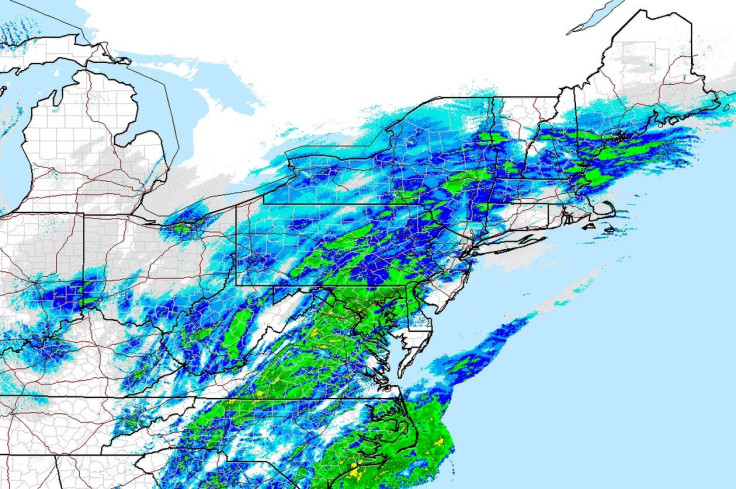
The new year is starting off with a "BRR!" in northeastern United States as heavy snow, strong winds, and Arctic temperatures are expected to batter commuters from Thursday afternoon until Friday evening. According to the National Weather Service, temperatures will likely hit record lows.
We are well aware of the risks of winter driving as we shared the aftermath of our winter test last weekend in a Mazda MX-5 Miata Club (we crashed it, read the story here). As a parting statement, I said that it is "important to remember the accident and take every precaution to prevent it from happening ever again." In an active effort to fulfill my vow, here is a helpful list of five ways to avoid a winter crash.
1.) Check the weather: Staying on top of hourly weather forecasts. Winter weather can change very quickly and roads can betray drivers in minutes. If you're traveling for a long distance, be sure to spend a moment before your trip to look up all the weather reports of all the areas you will pass during your trip.
According to Reuters, the latest winter storm is extreme wide, stretching from New England all the way down the Atlantic coast to the lower Mississippi Valley. In fact, as much as 14 inches of snow will hit parts of New England, including Boston. The National Weather Service also warns that a mass of Arctic air would drop temperatures on Friday to staggering record lows.
"Temperatures are expected to plummet tonight and tomorrow with wind chills dropping as low as 25 degrees below zero (F/-32 C)," said Massachusetts Governor Deval Patrick. "That is a very dangerous set of circumstances."
3.) Slow down: A good set of winter tires do a great job in accelerating a car through thick snow. However, deceleration on ice can be extremely unpredictable, usually resulting to a significantly longer braking distance compared to dry road. When the roads get slick, drive as if your pedals and your steering wheel are made of eggshells. Stepping or turning too abruptly spells disaster. Slower speeds allow more time for a driver to judge what is happening to the car and to the surrounding environment.
4.) Keep an eye on everyone else: Even if you are experienced to driving during bitter conditions, many are not. Give as much room from you and fellow drivers as possible. This way, if either vehicle suffers the misfortune of losing control, there is a lower possibility that one car will take another out.
5.) Practice: Practice is required in order for a driver to master step 3. Take your car out to a vacant lot and learn how your car reacts to inputs. A vacant lot allows a lot of open real estate to experiment and make mistakes. Try hitting the gas, slamming on the brakes, jerking on the wheel in order to understand how your car will behave. Practice how to regain control of the car should it slide and spin out.
Finally, Even though it is ideal to avoid a winter crash, life is an unpredictable thing. Prepare for the worst and be sure your car has supplies on hand, including water, blankets, winter clothes, a shovel, and other necessities to survive long enough to wait for help.



